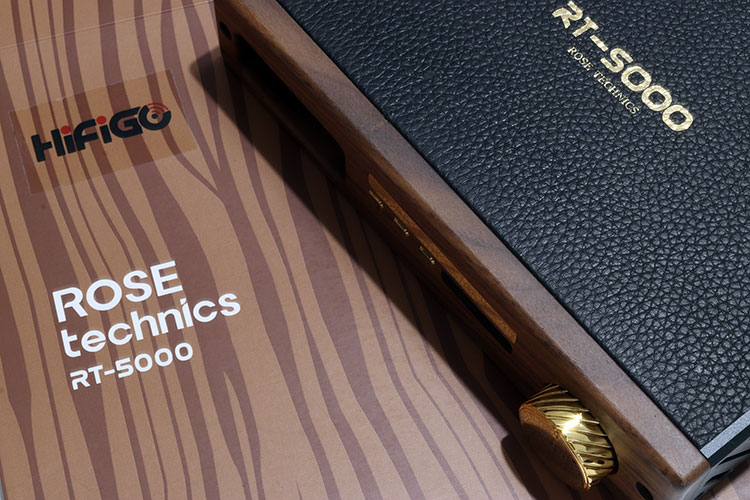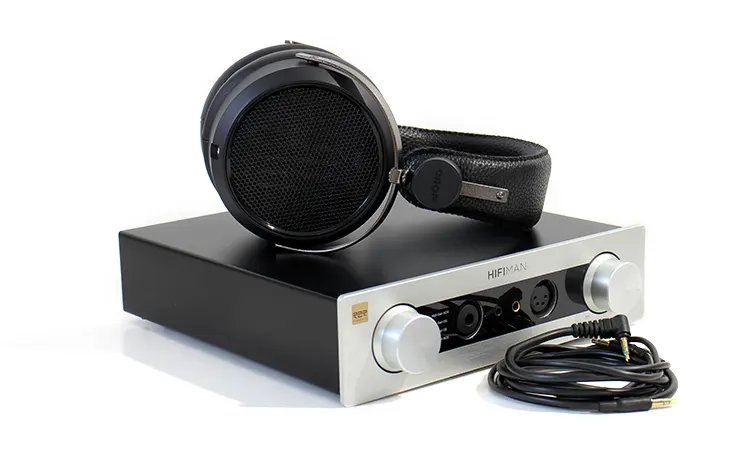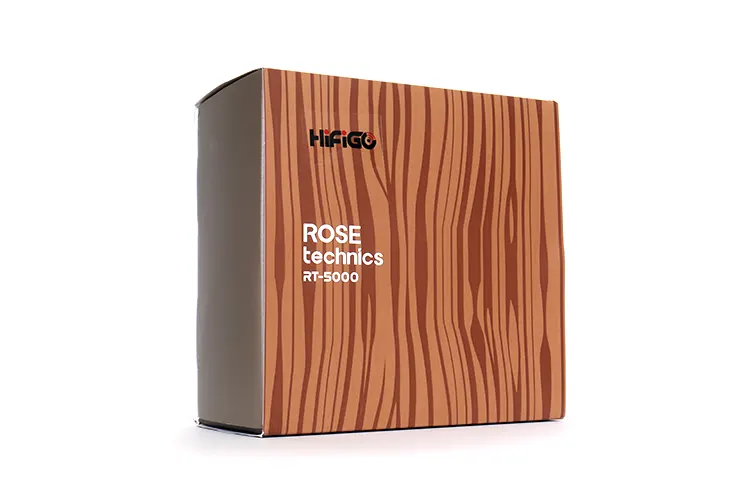Synergy
Power
The Rose Technics has four well-placed gain settings that play well with IEMs. There’s no perceivable hiss that I could tell and I use several IEMs including FiiO’s FD7, ORIVETI’s OD200, and the Thieaudio Oracle MKII.
When it comes to pushing a full-sized can, most will be fine and there’s only a small list that I would not use this model with headphones like the Susvara, the HE6, or even the Fostex line of cans like the T-line and variants like the Dekoni Audio Blue.
Most of those headphones fall within a higher price tier and that would also steer me away from them. Other than that, all the others are game.
Pairing
This paired nicely with my Meze Audio 99 Classics for example because it brings it closer to acceptable when it comes to midrange and treble response. It takes the can out of the bass and injects some needed balance.
But it will do better with the Meze Audio 109 PRO. Plus they’re both at a similar price range. I also tried HIFIMAN’s Arya Organic and it turned out to be a delicious combo. With the HIFIMAN Ananda Nano, the speediness of the combo was commendable.
The RT-5000 would make an excellent control hub, simultaneously feeding a clean signal to an external set of amplified speakers and external amplifiers as long as you don’t need volume control because it only controls the internal amplification output.
Select Comparisons
iFi Audio NEO iDSD
Technical
The original iFi Audio NEO iDSD is still around but it’s now called the performance edition. The only difference I see between the two is that they tweaked the jitter clock plus they added an SPDIF and USB iPurifier. But my personal opinion is that the NEO iDSD doesn’t need filters.
The NEO iDSD has a couple of things going for it. First off you can mount the unit vertically or horizontally. It comes with a remote control and all the internal goodies iFi Audio is known for like custom OV series operational amps and the XMOS microcontroller. Don’t forget the custom Burr-Brown DAC section and the Femto clock.
The original NEO has a Bluetooth receiver but counts on a less-recent 5.0 transmission to handle the same list of codecs as the RT-5000. They both sound similar to me especially if you tap into each unit’s rear line output ports which also happens to include identical connectivity.
Power output-wise, the NEO iDSD tends to be shy of a watt or two and can only cough up a maximum of 1000mW. Meantime, the RT-5000 can cough up 1.6 watts which is not much but in tests, the RT-5000 seems way more powerful.
If you step up to the NEO iDSD 2 then things change because of its 5.1 watts per side and the addition of xBass and xSpace. But that will cost you extra and the original NEO is in the red as it is comparatively. The original NEO as it stands sets you back an extra 200 at the checkout line.
Design
There’s quite a contrast here. The NEO is just that, something new. The cabinet design is unique with fine channels and swirls around the perimeter of the metal volume knob. It’s a beautifully crafted cabinet but it’s all silver and some might find it lacking color.
Contrary to that, The RT-5000 uses wood, and leather top and bottom panels, along with vented anodized metal sides. But in all honesty, the NEO is always cool to the touch. The RT500 on the other hand can run quite warm.
Performance
If we compare both models by using their power ratings, then, of course, the RT-5000 wins by more than a nose, but power isn’t everything.
Both DACs are great performers but there are differences. The NEO displays a warm, neutral character and portrays a personal stage while the RT-5000 is linear, and falls somewhere in between the clinical and musical scales. I’m inclining to the RT-5000 because there’s a better element definition and improved focus.
One fact that helps the NEO is that it’s one of the only combo units I know of that doesn’t make any noise while in operation, or selecting features and performing other tasks. The NEO always remains silent. I’m not saying that the RT500 is noisy, contrary, it’s also silent. It’s just a larger feat when the NEO’s design is so complex.
The RT-5000 seems simple in design and perhaps the omission of LED screens and digital switches is what makes it appealing.
HIFIMAN EF400
Technical
HIFIMAN rolled up its sleeves on the EF400. They did not outsource the DAC section and employed their own proprietary Himalaya DAC section mated to a power amplifier section that is capable of 4.1 watts on each side.
The EF400 is a big boy and inside you’ll find a massive toroidal transformer to supply massive amounts of power to all the separated circuitry boards within the cabinet. It’s also fed power directly from the wall and doesn’t use wall warts that tend to be noisy, electrically speaking.
Again, the rear I/O is somewhat lacking here and excludes the SPDIF and optical input. But HIFIMAN did manage to throw in a four-pin XLR connection upfront, giving you a total of four headphone taps versus three taps, but not to be used simultaneously on either of course.
Design
The EF400 is big and heavy. I’m not sure what contributes the most as far as weight. It could be the thick front panel or the thick outer shell. The Toroidal coil certainly contributes to increased weight.
The construction overall reminds me of how they used to make receivers back in the 70’s. It’s old-school revamped. Brushed Aluminum, large round knobs but the giveaway is the digital filter selection upfront moving this old-school design into the modern age.
The volume knob is smooth and many can comment that HIFIMAN should have stuck with this volume knob, and implemented the same knob on the EF400’s big brother, the EF600 which was the only downfall of the particular model.
Performance
If you compare raw power exclusively, the EF400 certainly has more power on tap, almost threefold, and it could come across as the more musical-sounding of the two as well.
The EF400 is the warmer-sounding of the two but the RT-5000 has the sharper character in definition and sounds the more focused of the two.
The EF400 works best with HIFIMANs own headgear since some find them to be bright, and pairing them with a warm-sounding combo unit makes sense.
But to my ears, the RT-5000 has an interesting ability to keep elements within smaller spaces inside the soundstage and that’s alongside a smooth frequency response, plenty of dynamism, and a silent background.
The bottom line is that the RT-5000 is best for critical listening and the HIFIMAN for enjoyable listening. But the line is thin between the two and depending on the headgear, the coin can flip.
My Verdict
The Rose Technics RT-5000 is a good first attempt at the $500+ DAC amplifier combo market and could have been better if the front panel had been more intuitive. On sonic merits alone, Rose Technics hit the ball out of the park with the RT-5000 because the sound quality is there in spades. It’s focused and pleasant to listen to.
One could also give brownie points for the Artisan aspect by admiring the RT-5000’s construction which is composed of wood, anodized metal, and leather. And let’s not forget the intricacies of the volume knob and gold-plated trinkets.
The Rose Technics is what I would call a ‘Rolls Royce’ type of mid-fi integrated DAC and headphone amplifier. It’s not the most powerful nor is it the fastest around, but it will supply the listener with audio that’s fit for the modern-day audiophile crowd and does so in stylish apparel. Champagne for everyone.
Rose Technics RT-5000 Technical Specifications
- USB decoding: PCM 32bit / 384kHz, DSD256
- Supported file formats: MP3, WMA, FLAC, WAV, AAC, HE-AAC, Apple Lossless, AIFF, DSD, DXD, APE, MQA
- DAC: ES9039PRO x2
- I/V amplifier: OPA 1612 x8
- LPF: OPA1612 X2
- Earphone amplifier: MUSES 01 x2 + 8 power tubes
- Power supply: DC 15V 3A
- SN Ratio: 125db
- Bluetooth chip: QCC5125
- Bluetooth version: 5.1
- Bluetooth format: LDAC, aptX Adaptive, aptX HD, aptX, AAC, SBC
- THD: 0.005%
- SE output power: 800mW at 32 Ω
- BAL output power: 1.6w at 32Ω
- Headphone output jack: 6.35mm, 3.5mm, 4.4mm
- Line out connector: XLR, RCA
- USB input connector: USB-B
- Channel separation: -115db
- Product weight: 822.5g
- Product dimensions: 191mm x 144.5mm x 40mm including protrusions





